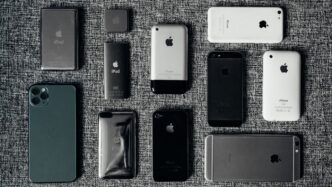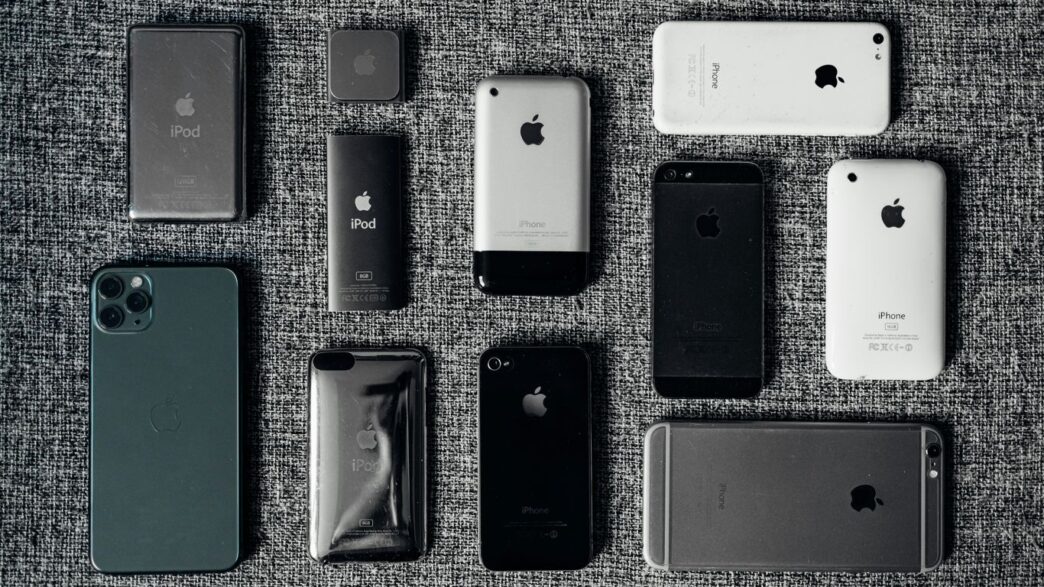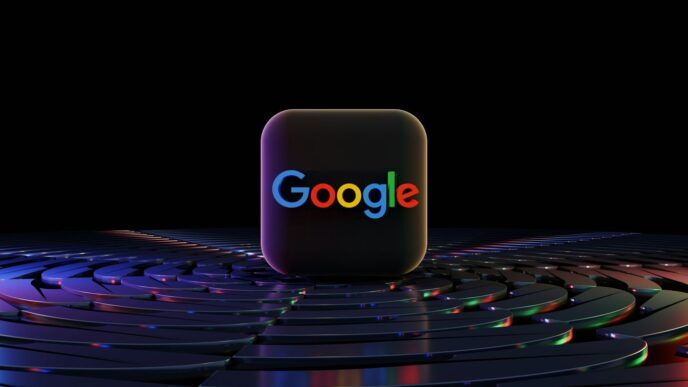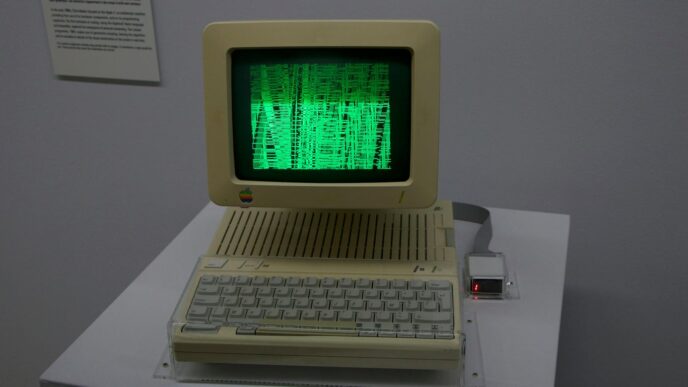If you’re tired of paying top dollar for a new phone, you’re not alone. In 2025, there are more choices than ever for folks who want something reliable without spending a fortune. The best phones under $600 now come packed with features that used to be reserved for the priciest models—think sharp cameras, fast screens, and decent battery life. Whether you’re all about photos, need a phone that lasts all day, or just want something simple, there’s an option out there for you. Here’s a look at the top 10 picks for anyone shopping on a budget this year.
Key Takeaways
- You don’t need to spend over $1,000 to get a great phone in 2025—lots of strong options are under $600.
- Many mid-range phones now have features like fast charging, solid cameras, and smooth screens.
- Android dominates the affordable phone market, with more choices and frequent updates than iPhones at this price.
- Foldable and flip phones are finally showing up in the mid-range, so you can get something unique without breaking the bank.
- Buying a phone under $600 doesn’t mean you have to settle for slow performance or old software.
1. Google Pixel 9a
If you’re after a phone that balances price and performance, the Google Pixel 9a is something you should check out. It sits at the top of many lists for good reason.
Honestly, the Pixel 9a is proof you don’t need to drop a grand to get a really solid phone. This thing covers almost all the bases for anyone who wants fast software, solid cameras, and a bright screen without all the fancier extras they might never use anyway. The price point—usually around $499—makes it stand out even more, especially now that a flagship runs way steeper.
Here’s what makes the Pixel 9a worth thinking about:
- 6.3-inch OLED display with a 120Hz refresh rate that feels super smooth whether you’re scrolling Reddit or watching TikTok.
- The main camera is a 48MP shooter, and there’s a 13MP ultrawide plus a selfie camera that doesn’t disappoint. Low-light? No problem, unless you’re specifically looking for wild zoom features.
- Google’s Tensor G4 chip runs the show, so everything moves along quickly—no weird lags or stutters.
- Seven years of software updates, which is pretty rare at this price (you’ll also be first in line for new Android versions).
- It’s water and dust-resistant (IP68), and the battery, while not record-breaking, will get you through a typical day.
- Comes in a few color options like Peony, Iris, and classic black or white.
Feature Table:
| Feature | Specification |
|---|---|
| Display | 6.3" OLED, 120Hz |
| Processor | Tensor G4 |
| Main Camera | 48MP (wide), 13MP (ultrawide) |
| Front Camera | 13MP |
| Battery | Lasts all day on average |
| Software Updates | 7 years |
| Water/Dust Res. | IP68 |
| Colors | Peony, Iris, Porcelain, Black |
As with any phone at this price, there are a couple trade-offs. The charging isn’t the fastest—23W—and you can forget about fancy telephoto shots for now. Still, for day-to-day use, it holds its own.
One tip to get even more out of it: boost your phone’s efficiency by tweaking a few settings, like uninstalling pre-installed apps you don’t use or using Google Photos’ auto-backup.
Truth is, most people don’t need more than what the Pixel 9a already offers. Unless you really crave bleeding-edge features or ultra-fast charging, this one is going to carry you for years, hassle-free.
2. Samsung Galaxy A36
The Samsung Galaxy A36 caught my attention right away—not just because it’s a Samsung, but because it lands smack in that sweet spot for price and features. For around $400, you’re looking at a phone that feels a bit fancier than the price tag lets on.
Here’s what you actually get:
- A vibrant, brighter-than-average display (seriously, it’s easy to see outside—always nice when you’re texting at the bus stop).
- A battery that lasts all day, no sweat. We’re talking a full charge going into bedtime, with some leftover juice.
- Main camera snaps are crisp in daylight, and portraits look better than I expected for this price.
But, and here’s where it gets tricky, the Galaxy A36 isn’t perfect. Apps can sometimes pause or stutter, especially if you’re the type to leave a bunch open. Also, the storage isn’t expandable, so if you hoard photos and videos, you might run out of space. The tradeoff: you do get that Samsung promise of six years of OS and security updates, which is wild for a midrange phone.
Below is a quick glance at the key specs:
| Feature | Galaxy A36 |
|---|---|
| Display | 6.5-inch AMOLED, 120Hz |
| Main Camera | 50MP wide, 8MP ultrawide |
| RAM / Storage | 8GB / 128GB or 256GB |
| Battery | 5,000mAh |
| Software Updates | 6 years |
| Price | Around $400 |
In short: The Galaxy A36 is for someone who just wants a Samsung, doesn’t stress about ultra-fast gaming, and prefers a reliable, good-looking phone that won’t feel outdated in a couple of years. If expandable storage or super-smooth performance is a dealbreaker, you’d want to skim further down this list. But if you want a lot for a little (and frequent updates), you won’t regret giving the A36 a shot.
3. OnePlus 15R
The OnePlus 15R is one of those phones people either know well or have never heard of. Oddly, it’s kind of an underdog — not as hyped as Google or Samsung, but it’s always lurking with some high-end tricks. What really stands out this year is just how close the OnePlus 15R gets to the more expensive flagships, for hundreds less. The performance is speedy, the software is clean, and, honestly, battery life gives the bigger brands some serious competition.
Let’s just look at the numbers for a minute:
| Spec | OnePlus 15R |
|---|---|
| Display | 6.82-inch AMOLED |
| Processor | Snapdragon 8-series |
| Battery Life | 22+ hours (typical use) |
| Wired Charging | Up to 80W |
| Cameras | Triple 50MP rear setup |
| Software Updates | 6 years promised |
| Wireless Charging | No (like past R-series) |
Here’s what you’ll actually notice in daily life:
- OxygenOS feels smooth, with some fun AI touches if you’re into that.
- Super-fast charging is so good, you forget what slow charging is.
- Cameras are solid, though if you’re picky about photos, other phones might win — but quality is more than fine for social sharing.
One thing about price: the main OnePlus 15 starts near $899 (just like last year’s OnePlus 13), but the 15R usually drops well under $600, making it one of the most affordable ways to get a nearly-flagship experience in your pocket. If you don’t need wireless charging and can live with ‘very good’ photos instead of ‘amazing,’ the 15R is a smart buy. Plus, it won’t look or feel out of place next to pricier phones — a nice touch if you care about having something that just works and lasts a long time.
4. Motorola Edge 2025

If you care about style as much as function, the Motorola Edge 2025 is hard to ignore at its price point. It comes in with a waterfall display—meaning the glass curves over the sides for an almost bezel-free look. Honestly, these edge displays are becoming less popular these days, since the curves sometimes make it tricky to use certain parts of the touchscreen. Thankfully, that issue isn’t too bad here, but it can still be annoying from time to time.
Let’s talk highlights:
- 6.7-inch pOLED screen that looks super sharp and vibrant
- 6000mAh battery, which means you’ll go more than a day without frantically searching for a charger
- MediaTek Dimensity 8350 chip offers smooth everyday performance, though it isn’t really built for hardcore gaming
- Cameras do quite well during the day, though low-light shots can feel a bit flat
Here’s a spec table for a quick overview:
| Feature | Motorola Edge 2025 |
|---|---|
| Display | 6.7" pOLED (FHD+) |
| Processor | MediaTek Dimensity 8350 |
| RAM | 8GB / 12GB |
| Battery | 6000mAh |
| Cameras | 50MP main + secondary |
| OS Updates | 3 years (OS) + 4 years (security) |
| Price | $550 |
Where the Edge 2025 starts to fall behind is software support. Motorola promises only three years of system updates, while something like the Pixel 9a is offering seven years of both updates and security patches. If you’re the type who keeps a phone until it dies, that could be an issue. Also, while Motorola’s UI is close to what you’d get on a pure Android phone, their new AI features sometimes feel half-baked instead of helpful.
In short, the Motorola Edge 2025 looks great and feels modern, especially compared to other midrange phones. The design is where it truly stands out. However, if you want the longest possible software updates or unbeatable nighttime camera performance, you might want to consider something else.
5. TCL 60 XE Nxtpaper 5G
The TCL 60 XE Nxtpaper 5G isn’t your typical mid-tier Android phone, and honestly, it’s pretty refreshing for folks who just want a solid device that doesn’t break the bank. The first thing you’ll notice is the Nxtpaper display — it’s matte instead of glossy, so it cuts down on glare and those annoying fingerprints. If you’ve ever tried to read outside and found yourself squinting, this phone might be a relief.
The big deal is TCL’s anti-reflective screen tech, which helps reduce eye strain without sacrificing color punch or sharpness. Some say blue-light claims are a bit overhyped, but if you’re staring at your screen a lot, this feels easier on the eyes.
Specs-wise, the 60 XE Nxtpaper 5G is packing a lot inside for its price. Let’s lay out the essentials:
| Feature | TCL 60 XE Nxtpaper 5G |
|---|---|
| Display | 6.78-inch Nxtpaper |
| Chipset | Dimensity 6100+ |
| Battery | 5010 mAh |
| Storage | 256 GB |
| RAM | 8 GB |
Here’s what stands out after a week or two with the phone:
- Battery life is strong. You’ll get through a heavy day easily, maybe even two days if you’re careful.
- There’s plenty of storage (256 GB), so no panic about deleting your photos every week.
- Performance feels just right for daily tasks, streaming, and some gaming — though don’t expect flagship speed.
This is the kind of phone you’d recommend to someone who wants a reliable, new Android for under $300, and isn’t chasing the most famous brand name. To get all the technical details and official launch notes, you can check the announcement of the TCL 60 XE NxtPaper 5G. For the price, it just gets the job done, and honestly, sometimes that’s all you really want.
6. Motorola Razr 2025
The Motorola Razr 2025 really stands out for folks looking for a folding phone that looks as cool as it feels in your hand. Fresh off the heels of last year’s model, this version keeps the fun cover display, but you get a bigger 7-inch screen inside and a faster Snapdragon 8 Elite chip. It’s smooth enough for gaming, streaming, or just doomscrolling on a rainy Tuesday.
One of the best things about the Razr 2025 is the way you can run just about any app on its outer screen or the big foldable display inside. I found that flipping it open still feels like something straight out of the future, but without the weird learning curve most foldables bring. The phone’s IP48 rating means it can handle a bit of rain (don’t drop it in a puddle, though), and the 256GB of storage is a solid chunk for photos, apps, and videos.
Here’s a quick look at the important specs:
| Feature | Details |
|---|---|
| Main Display | 7-inch foldable OLED (2992×1224) |
| Cover Display | 4.0-inch OLED |
| Processor | Snapdragon 8 Elite |
| Rear Cameras | 50MP wide, 50MP ultrawide |
| Selfie Camera | 50MP |
| Storage | 256GB |
| Battery & Charging | All-day battery, 68W fast charging |
| Water Resistance | IP48 |
| Price | $599.99 full retail pricing |
Stuff you’ll probably like:
- Snappy performance and fast charging keep up even if you forget to plug in until the afternoon.
- That outer screen lets you control music, check messages, and even pay for coffee without flipping it open.
- Colors pop with Pantone options—Scarab, Mountain Trail, Cabaret, Rio Red—so it just looks different from every other slab out there.
It’s not perfect. The cameras are just okay, not mind-blowing. Also, if you live surrounded by sand or dust, like, say, Arizona, you might want to think twice, since fine particles are still the enemy of foldable designs. But for $599.99, you’re getting a legit folding phone with modern specs—not something you see every day.
7. Xiaomi 15T
If you’re looking for a stylish device that holds up in both performance and price, the Xiaomi 15T deserves a spot on your shortlist. Xiaomi continues to pack power into its mid-tier models, and the 15T is no exception. This phone is quick, handles games like a champ, and the battery sticks by you long into the evening.
What stands out most is how close the 15T comes to matching flagship phones, without pushing past that $600 boundary. The display is crisp—an AMOLED that feels alive. Sure, it’d be nice if the display got a little brighter outside, but for binging shows or scrolling at home, it does the job well. Performance-wise, you’ll notice barely any lag, thanks to a solid chipset and speedy memory. That said, the lack of wireless charging is kind of a letdown in 2025, but easily overlooked for the other perks you get for the money.
Here’s a look at some key numbers for the Xiaomi 15T:
| Spec | Details |
|---|---|
| Display | 6.7" AMOLED, 120Hz |
| Chipset | MediaTek Dimensity 9400+ |
| Battery | 5500mAh, 90W charging |
| Main Camera | 50MP + 8MP ultrawide |
| Storage | 256GB / 512GB options |
| Price | ≈$580 USD (varies by region) |
A few things to know before buying:
- Not all users love Xiaomi’s HyperOS. It’s more cluttered than stock Android, with some bloatware.
- The ultrawide camera doesn’t match the main lens, so results can be inconsistent.
- Like many Xiaomi phones, the 15T isn’t easy to find in the US.
For folks who care most about smooth performance and an all-day battery, the Xiaomi 15T offers a polished, powerful, and reliable performance that nails the basics and then some. If you can live without wireless charging and don’t mind playing with Xiaomi’s software, this one’s a great catch for under $600.
8. Oppo Reno 13 Pro
The Oppo Reno 13 Pro is definitely standing out this year under $600, blending some pretty advanced tech in a price range that used to mean settling for basic stuff. What really sets the Reno 13 Pro apart are its smooth performance and sharp cameras, all wrapped in a very polished design.
Here’s a quick look at its specs:
| Feature | Details |
|---|---|
| Processor | Snapdragon 8 Elite Mobile |
| Display | 6.7" AMOLED, 120Hz refresh |
| Rear Cameras | 50MP main + 8MP ultrawide |
| Battery | 5000mAh, 80W fast charge |
| Storage/RAM | 256GB/12GB |
| OS | ColorOS 15 (based on Android 15) |
Some things that make the Reno 13 Pro a proper pick:
- Pictures pop: The main 50MP camera grabs crisp shots day or night, and AI tricks actually work (hello, motion capture).
- Super-fast charging: The 80W fast charger means the battery goes from nearly dead to 75% in about 20 minutes—super handy if you’re always running out the door.
- The screen is lovely: 120Hz refresh rate on AMOLED makes everything from scrolling TikTok to videos just feel nicer.
Still, it’s good to be smart with your phone shopping—sometimes going with a third-party retailer like technology professionals recommend gets you a better deal (plus, it’s a good excuse to upgrade your home office setup). Bottom line, the Reno 13 Pro is perfect for someone who wants a premium feel and performance without having to shell out $1,000, and doesn’t care about flashy brand names. The software is getting closer to stock Android too, so there’s less bloat to put up with. This is a solid pick if you want a phone that looks sharp and isn’t a pain to use daily.
9. Honor 400 Pro
If a phone with a slick design, strong battery life, and top-notch camera grabs your attention, the Honor 400 Pro deserves a look. The main thing you’ll notice with the 400 Pro is its centerpiece 200MP camera, which handles sharp portraits and daily shots with ease. There’s no telephoto here—just a main sensor, ultrawide, and selfie shooter—but the everyday results are solid, including some AI-powered portrait modes that add a bit of fun.
The software experience is packed with features, thanks to MagicOS, and Honor promises a full six years of security and OS updates. But it might not suit folks who appreciate a really plain interface. If you like to game a lot on your phone, you’ll quickly spot the Snapdragon 8 Gen 3 isn’t the quickest on the market—casual games run fine, but for more intense titles, you’d probably want something with more grunt. Charging also takes a little longer this year than last, but the 5300mAh battery still gets most users through a long day.
Here’s a quick look at how the key specs stack up:
| Feature | Details |
|---|---|
| Main Camera | 200MP |
| Display | 6.55" AMOLED |
| Battery | 5300mAh |
| Charging | Slower than last year |
| Software Updates | 6 years |
| Processor | Snapdragon 8 Gen 3 |
Some highlights that stood out to me:
- Sleek and premium design that doesn’t scream for attention
- Camera quality that rivals much pricier models, with neat editing effects
- Good battery life that feels dependable
- Long software support with regular updates
On the flip side, it’s not available everywhere (US folks are out of luck), and it’s not the first pick for serious gamers. Anyone wanting great photography on a reasonable budget, though, will feel right at home. The approach to cameras actually reminds me a bit of what you’ll see in other dual-camera setups, like the ones compared between Huawei and LG in this overview of dual-camera phone features—each brand does cameras their own way, and Honor embraces its own formula here.
All in all, the Honor 400 Pro hits right in that sweet spot for people who value design and dependable camera results at under $600.
10. Minimal Phone

Looking for something totally different from the flood of giant, glossy phones out there? The Minimal Phone takes a wild turn with its bold take on simplicity. It’s made for folks who want to break up with endless scrolling and constant buzzes, but still need to handle messages or calls. By using an e-paper touchscreen plus a physical keyboard, the Minimal Phone is as distraction-free as phones get—without ditching smart features entirely since it still runs on Android and lets you access the Google Play Store.
But there are real trade-offs. For one, the screen is monochrome and refreshes slower than you’re used to—streaming videos or gaming is basically a no-go. You trade vibrant color and buttery-smooth scrolling for better battery life and less eye strain. Here’s how a few specs stack up:
| Feature | Minimal Phone |
|---|---|
| Price | $399 |
| Display | E-paper touchscreen |
| Keyboard | Yes (physical) |
| Operating System | Android |
| Battery Life | Multi-day use |
| App Support | Full Google Play |
Some real draws and drawbacks:
- It’s a top pick for anyone who feels like their current phone runs their life, not the other way around.
- The physical keyboard is a love-it-or-hate-it thing, but texting without a touchscreen can be way more chill.
- You probably won’t want this as your only device if you rely on a phone for high-def photos, video, or gaming.
All in all, the Minimal Phone is kind of a breath of fresh air. It’s not about having the flashiest tech, but about stepping back from the daily avalanche of notifications. Weirdly, swapping your phone for one with fewer features might be the upgrade your brain needs. Sounds wild, but the peace and quiet? Pretty great.
Conclusion
So, that’s our list of the top 10 phones under $600 for 2025. It’s kind of wild how much you can get for your money these days. Just a few years ago, you’d have to pay a lot more to get features like fast charging, solid cameras, or a smooth display. Now, even mid-range phones are packing some serious punch. Sure, you might not get every single bell and whistle from the fancy flagships, but for most people, these phones do the job and then some. Whether you’re after a great camera, long battery life, or just something that won’t slow down after a year, there’s something on this list for you. Take your time, think about what matters most to you, and you’ll end up with a phone that feels just right—without emptying your wallet.
Frequently Asked Questions
What features should I look for in a phone under $600?
When shopping for a phone under $600, focus on battery life, camera quality, display sharpness, and how often the phone gets software updates. Also, check if the phone has enough storage and if it supports 5G.
Are phones under $600 good for gaming?
Many phones in this price range have strong processors and good screens, making them suitable for most games. However, they might not handle the highest graphics settings as well as more expensive phones.
How long will a mid-range phone last?
Most mid-range phones can last about three to four years with normal use. Taking care of your phone and keeping it updated helps it last longer.
Will I get software updates on a cheaper phone?
Some brands like Google and Samsung offer regular updates even for their affordable models. Others might not update as often, so it’s smart to check before buying.
Can I get a good camera on a phone under $600?
Yes, many phones under $600 have cameras that take great photos, especially in good light. Some even have special features like wide-angle or night modes, but they might not match the very best flagship cameras.
Is it better to buy a new mid-range phone or a used flagship?
A new mid-range phone gives you the latest software and warranty, while a used flagship might have better hardware but could be older and have less support. Think about what matters most to you: new features and updates, or top performance for the price.














